Class: Analytical Testing
The Analytical Testing licence is needed for individuals and corporations who wish to possess cannabis and to alter the chemical or physical properties of cannabis for testing purposes. Before applying, it’s important to determine if this licence is needed, as the applicant may already be authorized to conduct analytical testing activities under the terms of an existing licence (e.g., in-house testing for THC and CBD).
Analytical testing may include, but is not limited to, testing for chemical and microbial contaminants, cannabinoid content, dissolution/disintegration, sterility, stability and pesticides. Testing includes assurance that requirements are being met by licence holders bound by the Mandatory cannabis testing for pesticide active ingredients requirements.
Key Personnel for Cannabis Licensing
Key personnel to note in the licence application are the proposed Licence Holder, Responsible Person and Head of Laboratory. All three persons must set up accounts in the Cannabis Tracking and Licensing System (CTLS) and obtain IDs.
The Licence Holder
The Licence Holder will have overall responsibility for the licence, while the Responsible Person has the authority to bind the Licence Holder (often the CEO or Director of the organization or someone delegated by that person).
The Responsible Person
The Responsible Person is also the point of contact with Health Canada and is responsible for submitting the licence application. They are also responsible for the Licence Holder’s activities.
The Head of Laboratory
The Head of Laboratory is essential for overseeing all testing activities under this licence. The person must work at the licensed site and be responsible for the testing activities under section 91 of the Cannabis Regulations (testing for each lot/batch for composition). This person must have sufficient knowledge of the Cannabis Act and the Cannabis Regulations provisions that apply to the holder of a licence for analytical testing, and have both knowledge and experience related to the duties of the position.
The Licence Holder may designate one or more individuals as the Alternate Heads of Laboratory if they are qualified to replace the Head of Laboratory. These persons must be identified in the application with their credentials. If the applicant is a corporation, its Directors and Officers must also obtain account IDs. Note that a single person may hold one or multiple roles within the company (e.g., Licence Holder and the Responsible Person), assuming they meet all the requirements.
How to Create a Corporate Profile in CTLS
Creating a corporate profile is an important part of the application and can be prepared for an individual or a corporation. Corporations must ensure they create a profile for the organization in the CTLS. To create a corporate profile, Directors and Officers of the corporation must create user accounts with Account IDs linked to the corporate profile.
Creating a corporate profile has additional requirements:
· The full legal name(s) of the organization.
· Its incorporation number with the certificate of incorporation.
· The business address of the corporation and contact details
· Controlling organizations (i.e., the “Parent Corporation”), if applicable.
· An organization chart and personnel. Names and titles of senior management positions and any controlling entities or individuals, as well as relationships between these roles must be indicated.
Note that any controlling organization will be required to create a corporate profile. The Corporation ID of each controlling organization is also required. Once the appropriate Access IDs to the CTLS and corporate profile are completed, the main part of the application must be submitted.
How to Confirm Licence Ownership
Confirming licence ownership is about disclosing the proposed Licence Holder and Responsible Person, as previously discussed. The mailing address must be a Canadian address where the application will receive official mailed correspondence. Site and testing details identify the primary Canadian site at which the testing activities are proposed to occur. Testing processes are also disclosed for different forms of testing which may include testing for chemical contaminants (e.g., heavy metals); microbial contaminants such as yeasts, moulds and bacteria; cannabinoid content and potency; purity; pesticides; stability analysis (including expiry date); seed viability and other testing types.
The Site personnel section focuses on the qualifications of the Head of Laboratory and any designated Alternate Heads as these relate to the duties of their positions. The Head must possess a degree in a science related to the work being conducted, awarded by a Canadian university or by a foreign university recognized by a Canadian professional association. Confirmation that the Head will perform their duties at the site must also be submitted.
Comply with Destruction of Cannabis Regulations
Destruction of cannabis lot or batch samples must be carried out in a manner that fulfills the requirements of section 43 of the Cannabis Regulations. Analytical testing licensees must destroy lot and batch samples and all cannabis obtained from those samples within 90 days of testing. If testing is not initiated within 120 days, the Licence Holder must destroy or distribute the sample to another analytical testing licence holder.
Defining a Physical Security Plan
The physical security plan (PSP) accompanying the application will feature a site description (including delineation of perimeter and storage areas); a description of how storage areas are designed to prevent unauthorized access to cannabis; as well as site and floor plans. If areas on site (including buildings) will not be used exclusively by the applicant, these must be outside the proposed site perimeter.
A number of regulatory requirements for record-keeping must be observed. The applicant will provide a copy of government-issued identification to verify the identities of the Licence Holder, Responsible Person, and Head of Laboratory. They must also include a signed and completed attestation form (found on Health Canada’s website) attesting to the manner of record retention regarding inventories; distribution, sale and export; destruction; and R&D activities. All information and documents must be retained at the site of the Licence Holder, with the attestation signed by the Responsible Person.
A Site Evidence Package and video attestation are not required for the submission of an application to become a licence holder for Analytical Testing.






